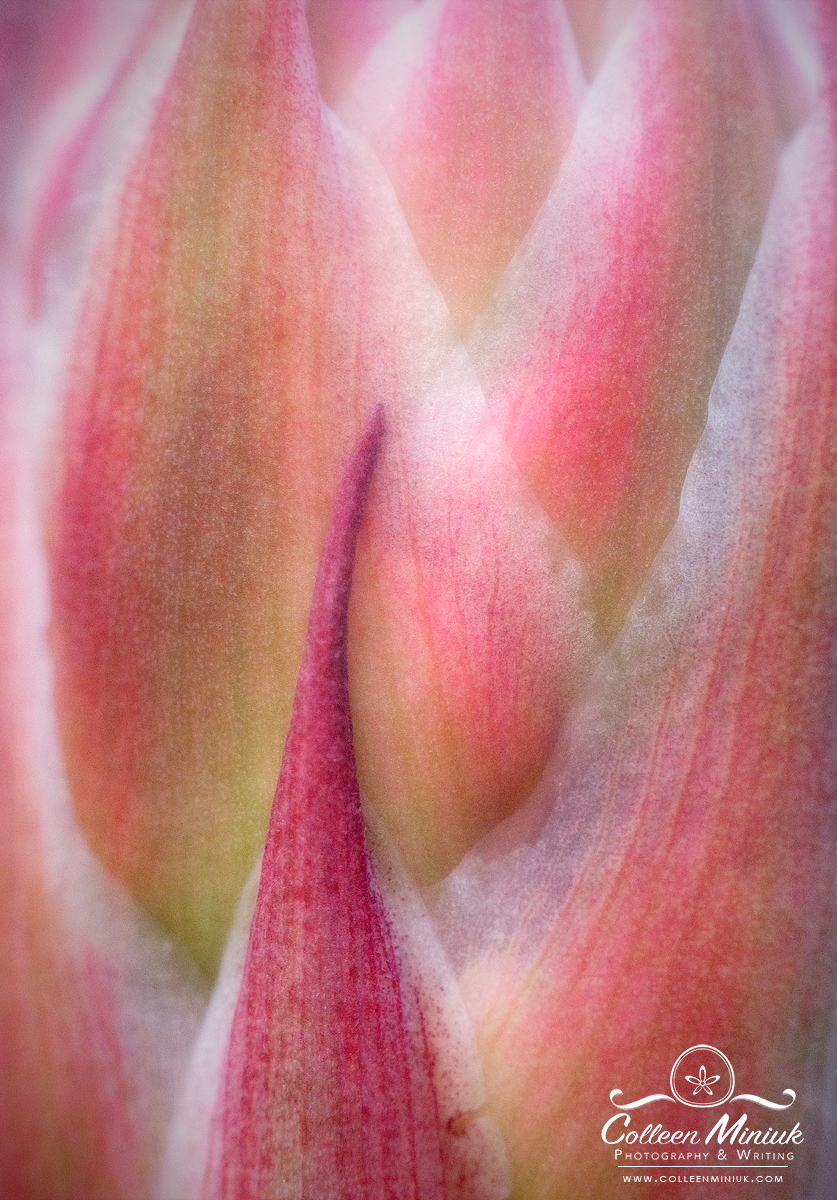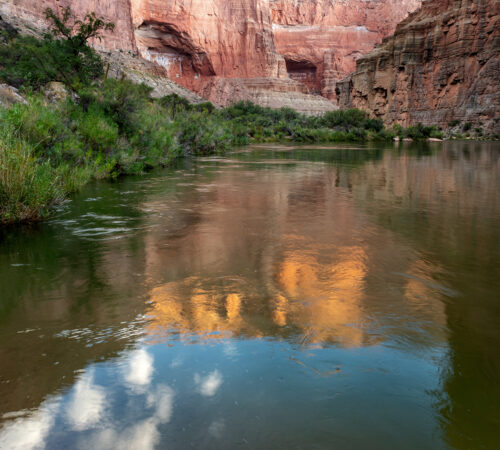Stand in Front of More Interesting Stuff

Dear Bubbles:
I’ve attended a number of your presentations over the last few months. All have been insightful. The concepts, especially ones pertaining to creativity, have been intriguing and helpful. I’ve been following the idea, “If you want to be a better photographer, stand in front of more interesting stuff.” But after hearing you talk, I wonder, what’s your take on that? Thanks.
Charles
Dear Charles:
Thank you for your kind words and for attending the online presentations. For many photography instructors, losing the ability to connect with our audiences during the pandemic’s travel restrictions was challenging, both mentally and financially. Connecting with others through the various virtual offerings have kept me, and all of us, going. Thank you for your support! I’m so glad you were able to keep learning through this crazy time!
Photographer Jim Richardson gets credit for the quote you refer to in your question. I’ve admired Jim’s incredible work in many a National Geographic magazine issue. I have especially enjoyed his articles regarding water issues (including western rivers like the Colorado and Columbia rivers).
In searching for the author of that quote online, I found this article about National Geographic him and this quote: https://www.nationalgeographic.com/photography/article/photo-research-richardson. (Note: while the quote you refer to is on Jim’s website verbatim, it looks like someone changed the word “interesting” to “better” in the article—which doesn’t change the intent of the advice.)
I don’t disagree with the quote at surface value. What concerns me about it is the possible misinterpretation of it, especially by those photographers interested in pursuing photography beyond documentary purposes and into more personal, creative expressions. So you can imagine I cringed when I read Jim’s last line of the first paragraph in that article, “Put simply, I’m a better photographer when I’m standing in front of something wonderful like the Grand Canyon.”
My first thought was, “Well, yeah, aren’t we all?” I mean, when you’re standing on the rim of the Grand Canyon, you only need to make sure your camera is turned on and your lens cap is taken off in order to make a remarkable image. Mother Nature has put a remarkable scene on a silver platter for you.
If you’re looking at photography as a way to document the world according to your reality, then that’s a fair statement. There’s absolutely nothing wrong with visiting striking locations. There’s also nothing wrong with anyone making a photograph from the rim of the Grand Canyon or any other “wonderful” place. Turn your camera on. Take your lens cap off. Make that photograph! Knock yourself out.
(Truth be told, photographing the Grand Canyon isn’t actually all that easy. Sure, it’s breathtakingly beautiful. But it’s also ginormous, complex, and, at times, overwhelming.)
That said, photography need not be a means for merely reproducing what we see. It can be used for self-expression, for celebrating moments, subjects, and ideas that move us as individuals as we go about our lives, whether you ever snap the shutter. In other words, it can be a way to enrich your life well beyond taking home just another visual trophy. You can say and do a lot more with a camera (combined with your brain and senses) than just “Hey, I went to the Grand Canyon, and isn’t it pretty?”
Although it hasn’t always been the case, I aspire to be more than a photographer who takes pretty pictures in pretty places. When I first picked up a camera in 2001, I roamed into the beautiful Sonoran Desert where stately saguaro cactus rose into the sky in front of rocky hills and cliffs. The desert is where I learned about the technical aspects of photography: what’s an ISO? How do I get the right depth of field? What kind of light do I need to create shape? How do I use a graduated neutral density filter? As such, it will always hold a special place in my heart.
In all its beauty, I could never get into to it photographically. I couldn’t make images there that satisfied me. I chalked it up initially to a lack of familiarity with my gear and with the locations. Still, there was a feeling in my gut I couldn’t explain at the time. When I saw issues of Arizona Highways magazine where photographers like Jack Dykinga, Randy Prentice, Paul Gill, and others made the Sonoran Desert look incredible through their images, I became even more frustrated. Sure, I stood in the same place as them, turn my camera on, take my lens cap off, and make a semi-decent snapshot of it. More often than not, though, I came away from those outings wondering why I couldn’t make the same quality images as Jack, Randy, Paul, and others.
Me standing in front of other people’s compositions and a lot of iconic scenes across the southwestern United States didn’t make me a better or more interesting photographer. It made me a bored one. Sure, seeing renowned places like was exciting. But there’s a lot more in the world to see, experience, and explore.
In search of a creative jolt, I applied for—and was selected for—an Artist-in-Residency in Acadia National Park. It took three terms (in 2009, 2010, and 2013) for me to realize a good photograph, by my own definition, did not depend upon external environmental factors like location, lighting, weather. It incorporated these things, but the impetus for creating the frame in the first place came from a deeper place. It came from my own perceptions, meaning, and connection with a subject or place. It came from internal, personal factors.
To make this shift required at least four things:
- An attitude adjustment. I stopped labeling the external factors. A location was no longer a “good” or “bad” location for photography. The light was no longer “good” or “bad.” The location and light existed. It was up to me as a photographer to connect (or not connect, as it may be) with the world around me exactly as it was in that moment.
- A better understanding of human perceptions. Once I learned the basics of Gestalt psychology and how humans perceive the world, I was able to pick out shapes, colors, lines, layers, etc. in any scene, not just pretty ones, and arrange them to fit the meaning I intended through my photograph. (To learn more about this, pick up a copy of Rudolph Arnheim’s book Art and Visual Perception and/or Richard Zakia’s book, Perception and Imaging. Also, watch my “No More Rules: Humans Perceptions in Composition” presentation on Singh-Ray Filters YouTube channel: https://www.youtube.com/watch?v=3mDYFq2J5EM.)
- A personalized interpretation of the definitions of words like “interesting,” “wonderful,” and “better.” While would all likely agree with Merriam-Webster Dictionary’s definition of “interesting” (“holding attention: arousing interest”), how we apply this term to the external world—and to what—may differ based on our individual preferences and interpretations. Icons, like many of the Grand Canyon overlooks, become iconic when enough people collectively agree it fits within the commonly understood descriptions of interesting, wonderful, and other adjectives. But what about the zillion other things and places in the world? Photographing what everyone else has already deemed interesting or wonderful doesn’t make you a better photographer. It makes you a clone. In writing, if you deemed a passage by your favorite author “interesting,” then rewrote it and sent it out in the world, you’d be sued for plagiarism. I find bubbles and waves and eddies and canyons interesting. That doesn’t mean you have to. You find what means something to you and photograph that.
- An increased confidence that I could (and would) make images I was excited about in lesser-known, but especially interesting places to me. This came with time. It also came after I released personal and societal expectations and the need to have my work accepted by anyone other than myself. It takes much more creative energy to put together compositions in obscure places where you don’t have a baseline to work from—you’re completely on your own!—but it’s infinitely more rewarding to call an image my own, even if no one else likes it.
So in the context of the quote, I agree you could make images you’re proud of and excited about if you stand in front of things that you define as interesting and wonderful. But I still don’t agree with the idea that standing passively in front of anything—the Grand Canyon or a cardboard box—will make you a better photographer. Improvement comes from deliberately stretching yourself beyond your current knowledge and capabilities, taking risks, and practicing. It doesn’t come from a location or any other external factors.
Sure, photographing the Grand Canyon could help make you a better photographer. So could doing it 1000 times from different overlooks across both rims or in the canyon along the Colorado River. But consider this: over the last year, we were not able to travel to our favorite places or new destinations due to the pandemic restrictions. We photographed from our kitchen tables, our backyards, and nearby parks. From what I’ve seen in my social media feeds, people have made remarkable images in these situations. In this time, we learned an incredible amount about ourselves, our craft, and the world around us in this past year by not standing in front of so-called wonderful scenes. We are better photographers than we were and it had little to do with a “wonderful” location and everything to do with seizing the opportunities in front of us. I could argue we put ourselves in front of more interesting scenes and subjects—just not the five-star ones on Yelp or Tripadvisor.
I wholeheartedly subscribe to what photographer Jay Maisel once said in an interview: “If you want to become a better photographer, become a more interesting person.” Fill your brain with new knowledge and ideas from the world around you, from books, movies, songs, art, and new experiences. Learn a new skill by practicing it until it is second nature, until you don’t think about the process of doing it anymore. Then turn your attention to another skill, technique, or approach. Get out a map, point to a place that rouses your curiosity, and ask yourself “What if I went there?” And then go! Make it happen! Follow your curiosity!
And most importantly, remember that you—we—have the freedom to practice photography and make images for whatever reasons we individually choose. We don’t have to make the same choices. We don’t have to stand at the same location either. In fact, we don’t even have to agree on what is wonderful or interesting or otherwise. The beauty of self-expression in photography is that we get to see the world through other people’s lenses, to learn about new realities, and to get an expanded understanding of our differences and similarities. I’d encourage us all to drop the labels of a “good” or “bad” photograph in the same way we release those terms for external environmental factors. Let’s celebrate each of our uniqueness and our expressions! Let’s see what we all experience through our own individual journeys in this crazy thing called life!
With that, I’d revise the quote to this: “If you want your world and the world to be a better place, stand in front of whatever wherever you wish.”
Be well, be wild,
Bubbles
Have a question about photography and/or the creative life? Need some advice? Looking for inspiration? Send your question to Dear Bubbles at colleen@colleenminiuk.com to be possibly featured in a future column post. (If you’d prefer a different display name than your real first name, please include your preferred nickname in your note





2 Comments
Sarah S
Beautifully written, and such a timely topic! Thanks for this lovely dose of inspiration.
Bubbles
Thanks for your comment and for reading, Sarah!